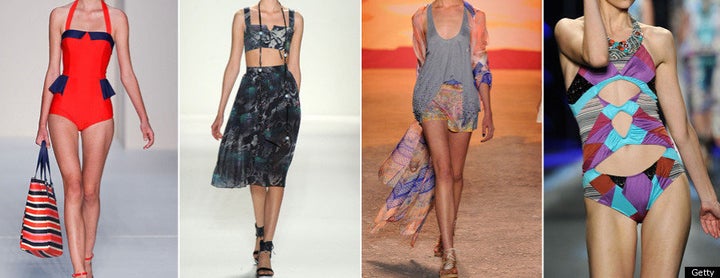
When the Council of Fashion Designers of America re-released its health guidelines earlier this year, it called for increasing awareness about eating disorder symptoms and recommended a ban on models younger than 16 walking in fashion shows. The goal was industry-specific: To address what the council's website calls the "overwhelming concern about whether some models are unhealthily thin."
But as CFDA CEO Steven Kolb acknowledged, fashion's influence is broader than that.
"As Diane [Von Furstenburg, CFDA president] and I wrote in our outreach letter to the industry ... 'Fashion Week has become a powerful voice, which reaches millions of people across the globe and we should not underestimate the consequences of the messages that we send,'" Kolb said in an email to HuffPost.
According to the National Association of Anorexia Nervosa and Associated Disorders, nearly 70 percent of girls in grades five through 12 said magazine images influence their ideals of a perfect body. In so-called "pro-anorexia" forums, posters write about watching fashion shows and combing magazines for "thinspiration."
Yet little hard data exists about whether or not the ubiquity of ultra-thin models causes people outside the industry to develop disordered eating or full-blown eating disorders.
"In general, when I'm working with patients, this concept of a 'thin ideal' does come up," said Dr. Allegra Broft, a psychiatrist in the Eating Disorders Program at Columbia Psychiatry, who explained that eating disorders are very complicated in terms of their etiology.
"It's reasonable to say that exposure could be a factor in the development of eating disorders," she continued. "But has a causal link been established? No."
The National Institute of Health estimates the lifetime prevalence of anorexia and bulimia is 0.6 percent of the U.S. adult population, but among 13- to 18-year-olds, it is 2.7 percent. There are numerous risk factors, including being female, age (eating disorders are most common in the teens and early 20s), family history and influence, as well as the presence of additional mental health issues.
According to HuffPost blogger Susan Albers, Psy.D., a psychologist at the Cleveland Clinic, exposure to thin models could also play a role.
"Although thin models are not the cause of eating disorders, they can be a trigger or a factor in maintaining an eating disorder," she said. "In other words, if a woman has a predisposition for an eating disorder and spends a lot of time looking at fashion magazines, this can be one of the factors that triggers feeling bad about her body, which she then turns into eating disorder behavior, like excessive dieting."
Much research has suggested a relationship between the two, though Dr. Anne E. Becker, a professor of Global Health and Social Medicine at Harvard Medical School, said there has not been any single, definitive scientific study. Experts say her own research is among the most interesting on how media might influence body image and problems.
Becker's work has concentrated on Fiji, where she found the arrival of the television corresponded with, among other things, an increase in disordered eating, including vomiting to lose or control weight. A follow-up study found that second-hand or peer exposure was particularly powerful, with friends discussing, copying and internalizing media images. Though Becker cautioned against extrapolating such results to the U.S., she said individuals here could be influenced by fashion in a similar way.
"With Fashion Week, and all of those thin models, and clothing that looks best on a size zero -- what that does is set a standard of what is socially desirable and prestigious that is likely to have a powerful influence on social norms," she said. "If one day we had a Fashion Week where there were size 16 models, I suspect that would be very influential, too."
HuffPost blogger and plus-size model Leona Palmer said that day could be far off: Plus-size models rarely walk in fashion shows, she said, and she doesn't anticipate that changing. (Both Ford and Wilhelmina, which operate plus-size divisions, declined to comment on booking trends.)
But the 30-year-old says she has worked steadily since she began modeling seven years ago, explaining there is "far more" work in catalogs. Palmer also cautioned that plus-size models are not necessarily any healthier in terms of their eating habits than their "straight-size" counterparts.
Yet the model said she does feel a sense of responsibility when it comes to influencing body image and issues on a broader scale, both in terms of young girls going through what she described as "average American girl food issues" like she did, as well as those who are at risk for more serious eating disorders.
"It's why I did this," Palmer said. "I was really ambivalent about it, but my mom said, 'If you had been growing up and seen someone who looked like you in a magazine, it would have changed your life.' And I thought, 'You're right. It would have, in terms of what I thought I needed to fit into in order to feel beautiful.'"
RELATED: